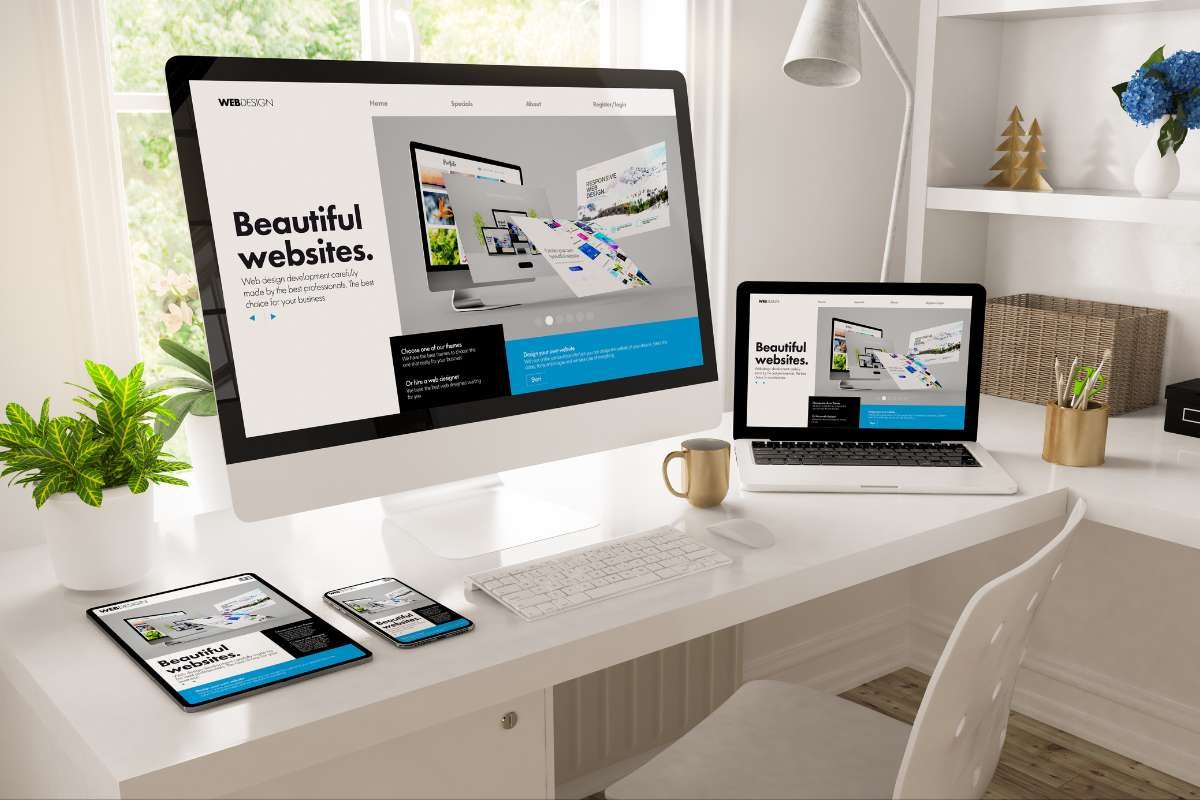In 2025, business technology is the base for all businesses, regardless of size. From cloud solutions to predictive AI, this dynamic field shapes how we connect, operate, and grow. But it’s more than just adopting new tech; it’s about smart, thoughtful management—maintaining, securing, and evolving your systems.
This “smart, flexible, commercial use tech” is vital for today’s hybrid, remote, first workforce, especially with increasing cyber threats. Leaders need a robust, well-maintained commercial technology infrastructure that spans all business functions.
This article will explore the current landscape, emerging trends, and practical R&D, focusing on how small businesses can balance budget with leading-edge technology. We’ll unpack 2025’s tech and how to ensure it all runs harmoniously, like a finely tuned instrument!
What is Business Technology?
Business technology refers to the integration of technology into business operations to improve efficiency, productivity, communication, and decision-making. This encompasses a wide range of tools, hardware, software, and services, including:
- Cloud-based platforms
- Enterprise resource planning (ERP)
- Artificial Intelligence (AI) and Machine Learning (ML)
- Cybersecurity systems
- Internet of Things (IoT)
- Customer Relationship Management (CRM)
In 2025, the scope of this technology is more integrated than ever, blending automation with data intelligence and facilitating everything from HR processes to marketing automation and supply chain visibility.
Why Business Technology Matters More Than Ever?
Today’s businesses are operating in a hyper-connected, high-speed global economy. Here’s why corporate technology is not optional, but it’s essential:
- Operational Efficiency: Automated systems reduce human error and streamline workflows.
- Scalability: Cloud-based tech allows businesses to expand without hefty infrastructure costs.
- Competitive Advantage: Leveraging emerging technologies helps companies stand out.
- Customer Experience: Personalized interactions, instant support, and data-driven insights improve satisfaction.
- Security and Compliance: Modern enterprise technology includes robust safeguards for data privacy and regulatory compliance.
Top Business Technology Trends in 2025
Staying ahead of the curve means understanding what’s next. Here are key occupational technology trends dominating the landscape in 2025:

1. AI-Driven Decision-Making:
AI isn’t just for analytics; it’s helping businesses make strategic choices. Tools like predictive modeling, AI, assisted financial forecasting, and smart customer segmentation are turning reactive companies into proactive powerhouses.
2. Hyper Automation
Beyond simple task automation, hyper automation connects workflows across departments, integrating AI, ML, robotic process automation (RPA), and digital twin technologies.
3. Quantum-Inspired Computing
Though true quantum computing remains in its early phase, quantum-inspired systems are already solving optimization problems in logistics, finance, and supply chains faster than traditional computing methods.
4. Cybersecurity Mesh Architecture (CSMA)
Security is no longer centralized. In 2025, businesses are adopting CSMA to provide a modular, flexible security approach across all endpoints, especially important with remote workforces.
5. Sustainable Tech and Green IT
Consumers and stakeholders are demanding eco-responsibility. Sustainable business technology includes energy, efficient data centers, e-waste recycling, and carbon monitoring software.
Challenges in Implementation
Despite the clear advantages, corporate technology adoption can be riddled with challenges:
- Cost Management: Especially for small businesses, maintaining tech infrastructure can be costly.
- Integration Issues: New platforms must integrate smoothly with legacy systems.
- Talent Shortage: There’s a growing demand for tech-savvy professionals, but supply often falls short.
- Security Risks: With increasing connectivity comes increased vulnerability to cyber threats.
Overcoming these obstacles requires not just adoption, but thoughtful planning and routine upkeep.
Business Technology Maintenance: A Vital Practice for Small Businesses
Many small businesses struggle to prioritize IT upkeep due to budget constraints. But ironically, neglecting maintenance can result in higher long-term costs. Well-maintained corporate technology ensures higher uptime, better performance, and enhanced security. Here’s how to keep it in peak condition:
1. Hire an IT Support Provider
If in-house expertise is lacking, outsource to a reliable IT partner. For example, an IT support provider in Boston can deliver:
- Routine patch management
- Risk assessments
- 24/7 remote assistance
- Access to premium tech tools without additional investments
This approach can be more economical than hiring a full-time internal IT team, making it ideal for smaller operations looking to scale their commercial technology without breaking the bank.
2. Perform Routine Network Assessments

Assess the current state of your systems to identify vulnerabilities and inefficiencies. Key practices include:
- Creating a regular maintenance schedule (daily, weekly, monthly)
- Automating updates and backups
- Monitoring system health and logs continuously
Effective assessments allow small businesses to adapt their business technology plans as needs evolve.
3. Check Your Hardware Annually
While cloud systems get the most attention, hardware still matters. Annual inspections ensure optimal performance and avoid unexpected downtime.
Watch for signs like:
- Overheating devices
- Power surges or electric shock
- Sudden crashes or lag
Addressing these early can extend the lifespan of your technology infrastructure.
4. Conduct Employee Training
Even the best systems can fail due to human error. Establish an internal culture of tech responsibility:
- Train staff on software best practices
- Enforce regular password changes
- Automate HR and training modules for consistency
An educated workforce enhances overall system health and reduces the chances of costly errors.
5. Document Everything

From network settings to software licenses, keep records updated. Proper documentation helps you:
- Troubleshoot quickly
- Track maintenance
- Prepare for audits
- Improve IT Onboarding
This is one of the most overlooked yet powerful aspects of business technology management.
Business Technology and Remote Work
The remote revolution is still in full swing in 2025. Companies are optimizing hybrid models with tools that enhance collaboration, such as:
- Video conferencing suites with AI transcription
- Cloud collaboration platforms like Notion and Miro
- Virtual reality (VR) meeting rooms
These tools fall under the broader umbrella of commercial technology, redefining how teams work together across time zones and continents.
Customer Experience
A company’s tech stack isn’t just for operations; it shapes customer interactions too. Consider:
- Chatbots powered by AI for 24/7 support
- CRMs that auto-segment based on behavior
- Analytics that guide personalized offers
These tools improve retention and loyalty, two critical metrics in today’s competitive market. A strategic investment in commerce technology helps businesses stay in sync with evolving customer demands.
Data Privacy and Compliance
With stricter regulations like GDPR and evolving global standards, compliance is critical. Business technology solutions now include:
- Automated audit trails
- Role-based access controls
- AI-powered anomaly detection
Proactive compliance measures reduce legal risks and enhance brand trust, crucial in 2025’s transparency-focused business environment.
The Role in Scaling Operations

As startups evolve into midsize companies or enterprises, scaling becomes a key goal. Tools that facilitate this include:
- Scalable cloud storage solutions
- Workflow automation platforms like Zapier or Make
- Data integration middleware for system harmony
Scalable business technology enables companies to grow quickly without encountering major operational roadblocks.
The Future of Business Technology
Looking ahead, we’re entering an era where commercial technology goes beyond systems and software—it becomes an enabler of culture, purpose, and sustainability.
Here’s what the next five years might bring:
- Ambient Computing: Devices that respond to unspoken commands or environmental triggers
- Digital Twins: Virtual replicas of real-world systems for advanced modeling
- Decentralized Tech: Blockchain for transparent, secure business transactions
- AI Co-Workers: Human-AI collaboration in creative and strategic decision-making
Business success will depend on how well companies blend innovation with ethics, data with empathy, and automation with human ingenuity.
Conclusion
Business technology is no longer a back-end function or optional tool within an organization; it is the backbone of today’s business. Whether you’re managing customer data, creating global supply chains, or designing internal workflows, technology will be critical to maintaining consistency, pace, and scale.
For small businesses specifically, routine maintenance is critical. Engaging providers for support, performing assessments, training users, and documenting everything are just some pre-emptive actions to ensure that your tech systems are ready at your stand to advance your mission.
The reality is that moving into 2025 and beyond, protecting, updating, and scaling isn’t just wise; it is required. With a good business technology base that’s actively maintained, you’re positioned to grow into the digital future.
FAQ:
1. What are business technology jobs?
Careers in business technology include being an IT specialist, intelligence analyst, commercial technology manager, quality assurance analyst, software developer, UX designer, and search engine optimization (SEO) specialist. The specific responsibilities of these different careers vary widely.
2. What are the 4 types of businesses?
The most common forms of business are the sole proprietorship, partnership, corporation, and S corporation.
3. What is the easiest IT degree to get?
The easiest IT degree to obtain is subjective and depends on individual strengths and prior knowledge, but generally, Information Technology (IT) degrees, particularly those focused on IT support, web development, or IT management, are often considered more accessible. These areas often require less intense math and coding compared to more technical fields like computer science or software engineering.


















